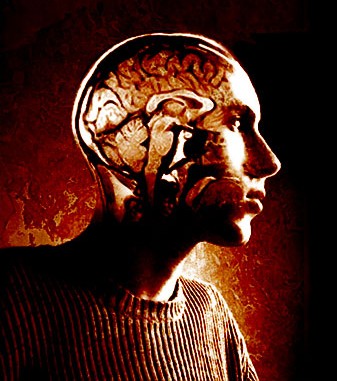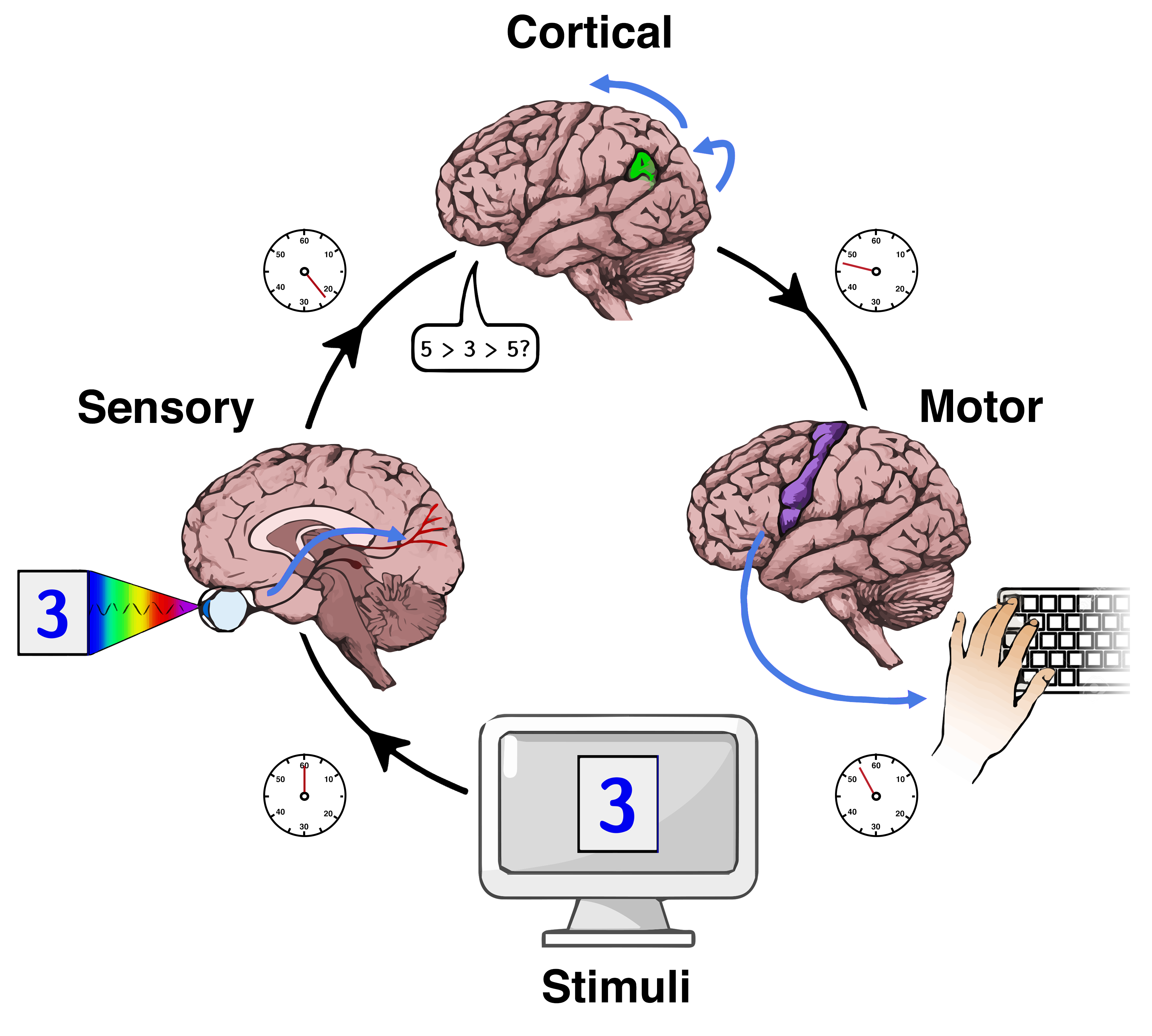|
Neurobiological Effects Of Physical Exercise
The neurobiological effects of physical exercise involve possible interrelated effects on brain structure, brain function, and cognition. Research in humans has demonstrated that consistent aerobic exercise (e.g., 30 minutes every day) may induce improvements in certain cognitive functions, neuroplasticity and behavioral plasticity; some of these long-term effects may include increased neuron growth, increased neurological activity (e.g., c-Fos and BDNF signaling), improved stress coping, enhanced cognitive control of behavior, improved declarative, spatial, and working memory, and structural and functional improvements in brain structures and pathways associated with cognitive control and memory. The effects of exercise on cognition may affect academic performance in children and college students, improve adult productivity, preserve cognitive function in old age, prevent or treat certain neurological disorders, and improve overall quality of life. In healthy adult ... [...More Info...] [...Related Items...] OR: [Wikipedia] [Google] [Baidu] |
Exercise Therapy
Physical therapy (PT), also known as physiotherapy, is a healthcare profession, as well as the care provided by physical therapists who promote, maintain, or restore health through patient education, physical intervention, disease prevention, and health promotion. Physical therapist is the term used for such professionals in the United States, and physiotherapist is the term used in many other countries. The career has many specialties including musculoskeletal, orthopedics, cardiopulmonary, neurology, endocrinology, sports medicine, geriatrics, pediatrics, women's health, wound care and electromyography. PTs practice in many settings, both public and private. In addition to clinical practice, other aspects of physical therapy practice include research, education, consultation, and health administration. Physical therapy is provided as a primary care treatment or alongside, or in conjunction with, other medical services. In some jurisdictions, such as the United Kingdom, phys ... [...More Info...] [...Related Items...] OR: [Wikipedia] [Google] [Baidu] |
Jogging
Jogging is a form of trotting or running at a slow or leisurely pace. The main intention is to increase physical fitness with less stress on the body than from faster running but more than walking, or to maintain a steady speed for longer periods of time. Performed over long distances, it is a form of aerobic endurance training. Definition Jogging is running at a gentle pace; its definition, as compared with running, is not standard. In general, jogging speed is between . History The word ''jog'' originated in England in the mid-16th century. The etymology is unknown, but it may be related to ''shog'' or have been a new invention. In 1593, William Shakespeare wrote in ''Taming of the Shrew'', "you may be jogging whiles your boots are green". At that point, it usually meant to leave. The term ''jog'' was often used in English and North American literature to describe short quick movements, either intentional or unintentional. It is also used to describe a quick, sharp shake o ... [...More Info...] [...Related Items...] OR: [Wikipedia] [Google] [Baidu] |
American Academy Of Neurology
The American Academy of Neurology (AAN) is a professional society representing over 40,000 neurologists and neuroscientists. As a medical specialty society it was established in 1948 by A.B. Baker of the University of Minnesota to advance the art and science of neurology, and thereby promote the best possible care for patients with neurological disorders. It is headquartered in Minneapolis and maintains a health policy office in Washington, D.C. In April 2012, the academy relocated its headquarters to a new 63,000-square-foot building in downtown Minneapolis. The five-story facility cost $20 million to build. Activities Annual meeting The annual meeting of the AAN is attended by more than 15,000 neurologists and neuroscientists from the US and abroad. The American Academy of Neurology has formal policies for avoiding conflicts of interest with pharmaceutical and device industries, and meets or exceeds all recommendations of the Council of Medical Specialty Societies Code. T ... [...More Info...] [...Related Items...] OR: [Wikipedia] [Google] [Baidu] |
Attention Deficit Hyperactivity Disorder
Attention deficit hyperactivity disorder (ADHD) is a neurodevelopmental disorder characterised by symptoms of inattention, hyperactivity, impulsivity, and emotional dysregulation that are excessive and pervasive, impairing in multiple contexts, and Developmental psychology, developmentally inappropriate. ADHD symptoms arise from executive dysfunction. Impairments resulting from deficits in self-regulation such as time management, Cognitive inhibition, inhibition, task initiation, and sustained attention can include poor professional performance, relationship difficulties, and numerous health risks, collectively predisposing to a diminished Quality of life (healthcare), quality of life and a reduction in life expectancy. As a consequence, the disorder costs society hundreds of billions of US dollars each year, worldwide. It is associated with other mental disorders as well as non-psychiatric disorders, which can cause additional impairment. While ADHD involves a lack of su ... [...More Info...] [...Related Items...] OR: [Wikipedia] [Google] [Baidu] |
Major Depressive Disorder
Major depressive disorder (MDD), also known as clinical depression, is a mental disorder characterized by at least two weeks of pervasive depression (mood), low mood, low self-esteem, and anhedonia, loss of interest or pleasure in normally enjoyable activities. Introduced by a group of US clinicians in the mid-1970s, the term was adopted by the American Psychiatric Association for this syndrome, symptom cluster under mood disorders in the 1980 version of the ''Diagnostic and Statistical Manual of Mental Disorders'' (DSM-III), and has become widely used since. The disorder causes the second-most years lived with disability, after low back pain, lower back pain. The diagnosis of major depressive disorder is based on the person's reported experiences, behavior reported by family or friends, and a mental status examination. There is no laboratory test for the disorder, but testing may be done to rule out physical conditions that can cause similar symptoms. The most common time o ... [...More Info...] [...Related Items...] OR: [Wikipedia] [Google] [Baidu] |
Adjunct Therapy
Adjuvant therapy, also known as adjunct therapy, adjuvant care, or augmentation therapy, is a therapy that is given in addition to the primary or initial therapy to maximize its effectiveness. The surgeries and complex treatment regimens used in cancer therapy have led the term to be used mainly to describe adjuvant cancer treatments. An example of such adjuvant therapy is the additional treatment usually given after surgery where all detectable disease has been removed, but where there remains a statistical risk of relapse due to the presence of undetected disease. If known disease is left behind following surgery, then further treatment is not technically adjuvant. An adjuvant used on its own specifically refers to an agent that improves the effect of a vaccine. Medications used to help primary medications are known as add-ons. History The term "adjuvant therapy," derived from the Latin term ''adjuvāre'', meaning "to help," was first coined by Paul Carbone and his team at th ... [...More Info...] [...Related Items...] OR: [Wikipedia] [Google] [Baidu] |
Central Nervous System Disorders
Central nervous system diseases or central nervous system disorders are a group of neurological disorders that affect the structure or function of the brain or spinal cord, which collectively form the central nervous system (CNS). These disorders may be caused by such things as infection, injury, blood clots, age related degeneration, cancer, autoimmune disfunction, and birth defects. The symptoms vary widely, as do the treatments. Central nervous system tumors are the most common forms of pediatric cancer. Brain tumors are the most frequent and have the highest mortality. Some disorders, such as substance addiction, autism, and ADHD may be regarded as CNS disorders, though the classifications are not without dispute. Signs and symptoms Every disease has different signs and symptoms. Some of them are persistent headache; pain in the face, back, arms, or legs; an inability to concentrate; loss of feeling; memory loss; loss of muscle strength; tremors; seizures; increased refl ... [...More Info...] [...Related Items...] OR: [Wikipedia] [Google] [Baidu] |
Psychological Stress
In psychology, stress is a feeling of emotional strain and pressure. Stress is a form of psychological and mental discomfort. Small amounts of stress may be beneficial, as it can improve athletic performance, motivation and reaction to the environment. Excessive amounts of stress, however, can increase the risk of strokes, heart attacks, ulcers, and mental illnesses such as depression and also aggravate pre-existing conditions. Psychological stress can be external and related to the environment, but may also be caused by internal perceptions that cause an individual to experience anxiety or other negative emotions surrounding a situation, such as pressure, discomfort, etc., which they then deem stressful. Hans Selye (1974) proposed four variations of stress. On one axis he locates good stress ( eustress) and bad stress (distress). On the other is over-stress (hyperstress) and understress (hypostress). Selye advocates balancing these: the ultimate goal would be to balance ... [...More Info...] [...Related Items...] OR: [Wikipedia] [Google] [Baidu] |
Negative Affect
In psychology, negative affectivity (NA), or negative affect, is a personality variable that involves the experience of negative emotions and poor self-concept. Negative affectivity subsumes a variety of negative emotions, including anger, contempt, disgust, guilt, fear, and nervousness. Low negative affectivity is characterized by frequent states of calmness and serenity, along with states of confidence, activeness, and great enthusiasm. Individuals differ in negative emotional reactivity.Tellegen, A. (1985). Structures of mood and personality and their relevance to assessing anxiety, with an emphasis on self-report. In A. H. Tuma & J. D. Maser (Eds.), Anxiety and the Anxiety disorders, (pp. 681-706), Hilssdale, NJ: Erlbaum. Trait negative affectivity roughly corresponds to the dominant personality factor of anxiety/neuroticism that is found within the Big Five personality traits as emotional stability. The Big Five are characterized as openness, conscientiousness, extraversion ... [...More Info...] [...Related Items...] OR: [Wikipedia] [Google] [Baidu] |
Positive Affect
Positive affectivity (PA) is a human characteristic that describes how much people experience positive affects (sensations, emotions, sentiments); and as a consequence how they interact with others and with their surroundings. People with high positive affectivity are typically enthusiastic, energetic, confident, active, and alert. Research has linked positive affectivity with an increase in longevity, better sleep, and a decrease in stress hormones. People with a high positive affectivity have healthier coping styles, more positive self-qualities, and are more goal oriented. Positive affectivity also promotes an open-minded attitude, sociability, and helpfulness. Those having low levels of positive affectivity (and high levels of ''negative'' affectivity) are characterized by sadness, lethargy, distress, and un-pleasurable engagement (see negative affectivity). Low levels of positive affect are correlated with social anxiety and depression, due to decreased levels of dopamine. P ... [...More Info...] [...Related Items...] OR: [Wikipedia] [Google] [Baidu] |
Mental Chronometry
Mental chronometry is the scientific study of processing speed or reaction time on cognitive tasks to infer the content, duration, and temporal sequencing of mental operations. Reaction time (RT; also referred to as "response time") is measured by the elapsed time between stimulus onset and an individual's response on elementary cognitive tasks (ECTs), which are relatively simple perceptual-motor tasks typically administered in a laboratory setting. Mental chronometry is one of the core methodological paradigms of human experimental, cognitive, and differential psychology, but is also commonly analyzed in psychophysiology, cognitive neuroscience, and behavioral neuroscience to help elucidate the biological mechanisms underlying perception, attention, and decision-making in humans and other species. Mental chronometry uses measurements of elapsed time between sensory stimulus onsets and subsequent behavioral responses to study the time course of information processing in th ... [...More Info...] [...Related Items...] OR: [Wikipedia] [Google] [Baidu] |
Cognitive Flexibility
Cognitive flexibility is an intrinsic property of a cognitive system often associated with the mental ability to adjust its activity and content, switch between different task rules and corresponding behavioral responses, maintain multiple concepts simultaneously and shift internal attention between them. The term ''cognitive flexibility'' is traditionally used to refer to one of the executive functions. In this sense, it can be seen as neural underpinnings of adaptive and flexible behavior. Most flexibility tests were developed under this assumption several decades ago. Nowadays, cognitive flexibility can also be referred to as a set of properties of the brain that facilitate flexible yet relevant switching between functional brain states. Cognitive flexibility varies during the lifespan of an individual. In addition, certain conditions such as obsessive–compulsive disorder are associated with reduced cognitive flexibility. Since cognitive flexibility is a vital component o ... [...More Info...] [...Related Items...] OR: [Wikipedia] [Google] [Baidu] |







